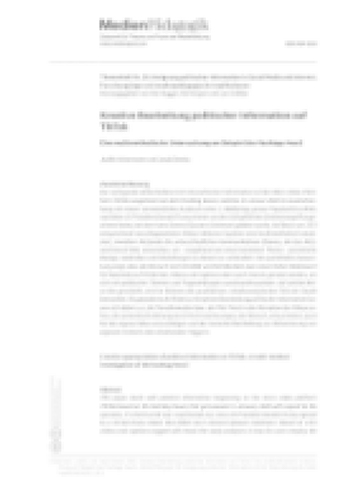Abstract
In recent studies on children and electronic media, children are acknowledged as active users, interpreting TV-texts in various meaningful ways, according to their previously constructed knowledge of narratives and relating the texts to their everyday lives. Still, there is a tendency that toddlers' (ages 1 to 3) viewing is neglected, and seen as mere fascinations of patterns, bright colours and movements without focusing on the social uses or uses in which television narratives come to play an important part in small children's experimenting with building identity and self-image. This article focuses on the meaning-making processes that take place when toddlers watch television and DVD, and the way in which they broaden the reception-situation to different arenas, for instance through play and different uses of merchandise connected to the television programs. Also, it studies the context of children's media use, the way both parents, media and market set up the frames of children's reception.

